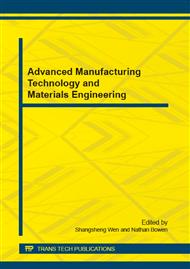[1]
Information on http: /www. iaea. org/pris.
Google Scholar
[2]
S. Z. Zou, The manufacture of rotor forging in China for thirty five years, Heavy. Casting. Forging. 1 (1994) 29-38.
Google Scholar
[3]
B. Z. Wang, J. J. Gao, H. L. Liu, Review and prospect of super large steel ingot of extreme manufacturing, The 2014 Seminar of Ingot Manufacturing Technology and Management. Henan, China, (2014).
Google Scholar
[4]
B. Gurovich, E. Kuleshova, O. Zabusov, A. Frolov, M. Saltykov, D. Maltsev, Influence of structural parameters on the tendency of VVER-1000 reactorpressure vessel steel to temper embrittlement, J. Nucl. Mater. 435 (2013) 25–31.
DOI: 10.1016/j.jnucmat.2012.12.020
Google Scholar
[5]
V. Cihal. The influence of nitrogen, phosphorus, sulphur and nickel on the stress corrosion cracking of austenitic Fe-Ni-Cr alloys, Corros. Sci. 25 (1985) 815–819.
DOI: 10.1016/0010-938x(85)90013-7
Google Scholar
[6]
Y. Yoshioka, H. Itou, Y. Tanaka, The influence of chemical composition and temper heat-treatment on strength and impact toughness in Ni-Cr-Mo-V steels. J. Iron. Steel. Inst. Jpn. 89 (2003 ) 705-710.
DOI: 10.2355/tetsutohagane1955.89.6_705
Google Scholar
[7]
C. Y. Zhang, S. Yang, Smelting of the ultra pure rotor 30Cr2Ni4MoV steel, Cfhi. Technol. 2 (2008) 40-41.
Google Scholar
[8]
Z. Lv, L. J. Song, X. F. Wang, Q. W. Wang, X. Q. Wei, W. Z. Xu, The manufacture of 1000MW ultra-supercritical steam turbine rotor forgings, Mag. Equip. Mach. 2 (2012) 10-18.
Google Scholar
[9]
G. Y. Sha, J. S. Pan, M. Y. M, H. D. Chi, M. S. Zheng, The grain growth and structure inheritance of 20CrMnMo and 17Cr2Ni2Mo steels, Heat. Treat. Met. 6 (1995) 24-27.
Google Scholar
[10]
X. H. Liu, J. T. Lin, Technical progress of domestic and foreign heavy turbine rotor forging materials, Heat. Treat. Met. Abroad. 6 (1999) 5-8.
Google Scholar
[11]
F. Z. Xuan, X. Q. Huang, S. T. Tu, Comparisons of 30Cr2Ni4MoV rotor steel with different treatments on corrosion resistance in high temperature water, Mater. Des. 29 (2008) 1533-1539.
DOI: 10.1016/j.matdes.2008.02.003
Google Scholar
[12]
R. Viswanathan, T. P. Sherlock, Long-time isothermal temper embrittlement in Ni-Cr-Mo-V steels, Metall. Trans. 3 (1972) 459-468.
DOI: 10.1007/bf02642050
Google Scholar
[13]
Y. W. Li, Applying of refined 30Cr2Ni4MoV on slow pressure rotor of the ultra-super critical turbine, Turbine. Technol. 48 (2006) 73-75.
Google Scholar
[14]
H. G. Guo, Z. S. Qu, Development of heavy forging manufacturing industry in our country, Heavy. Casting. Forging. 1 (2003) 42-45.
Google Scholar


